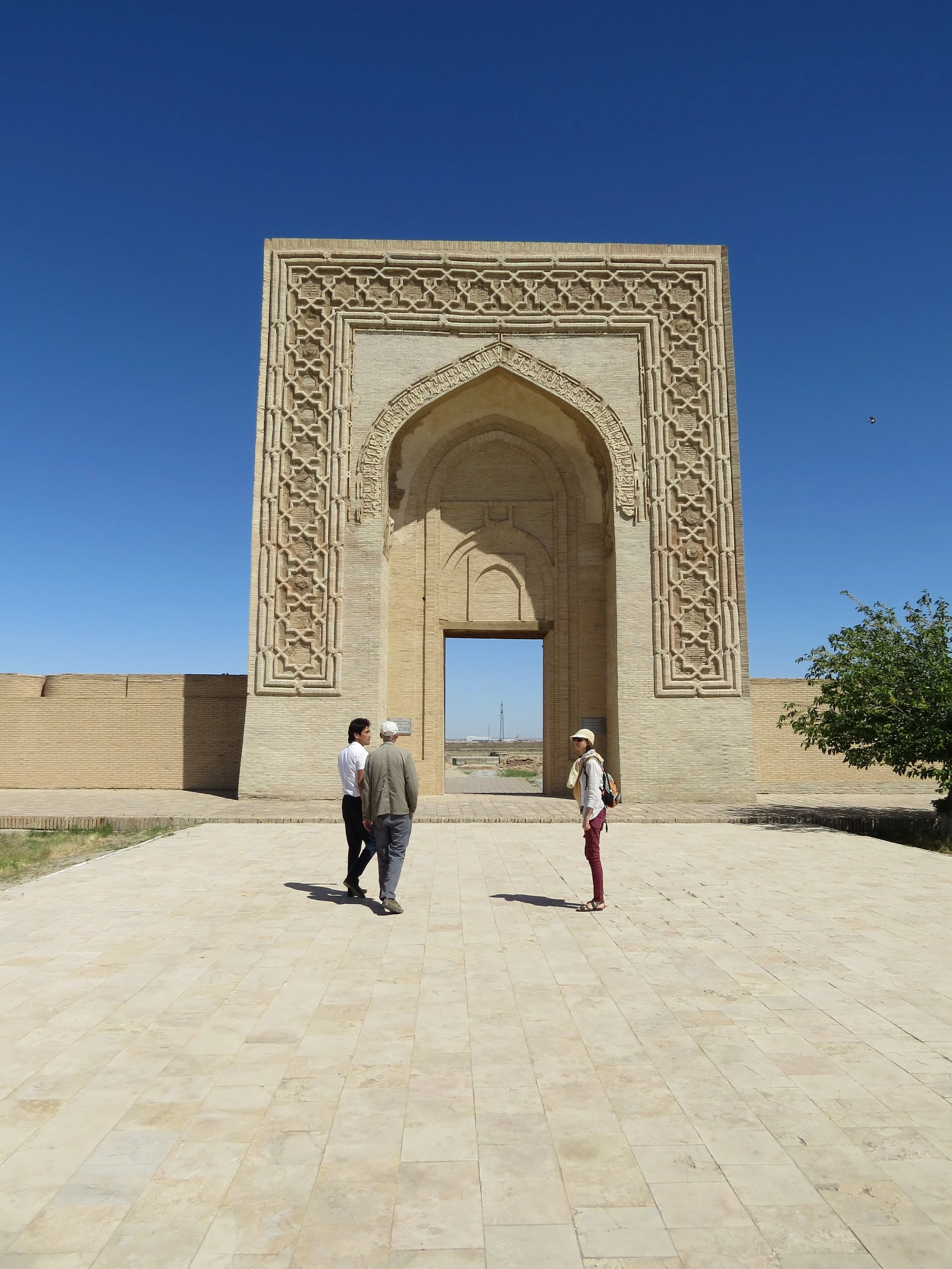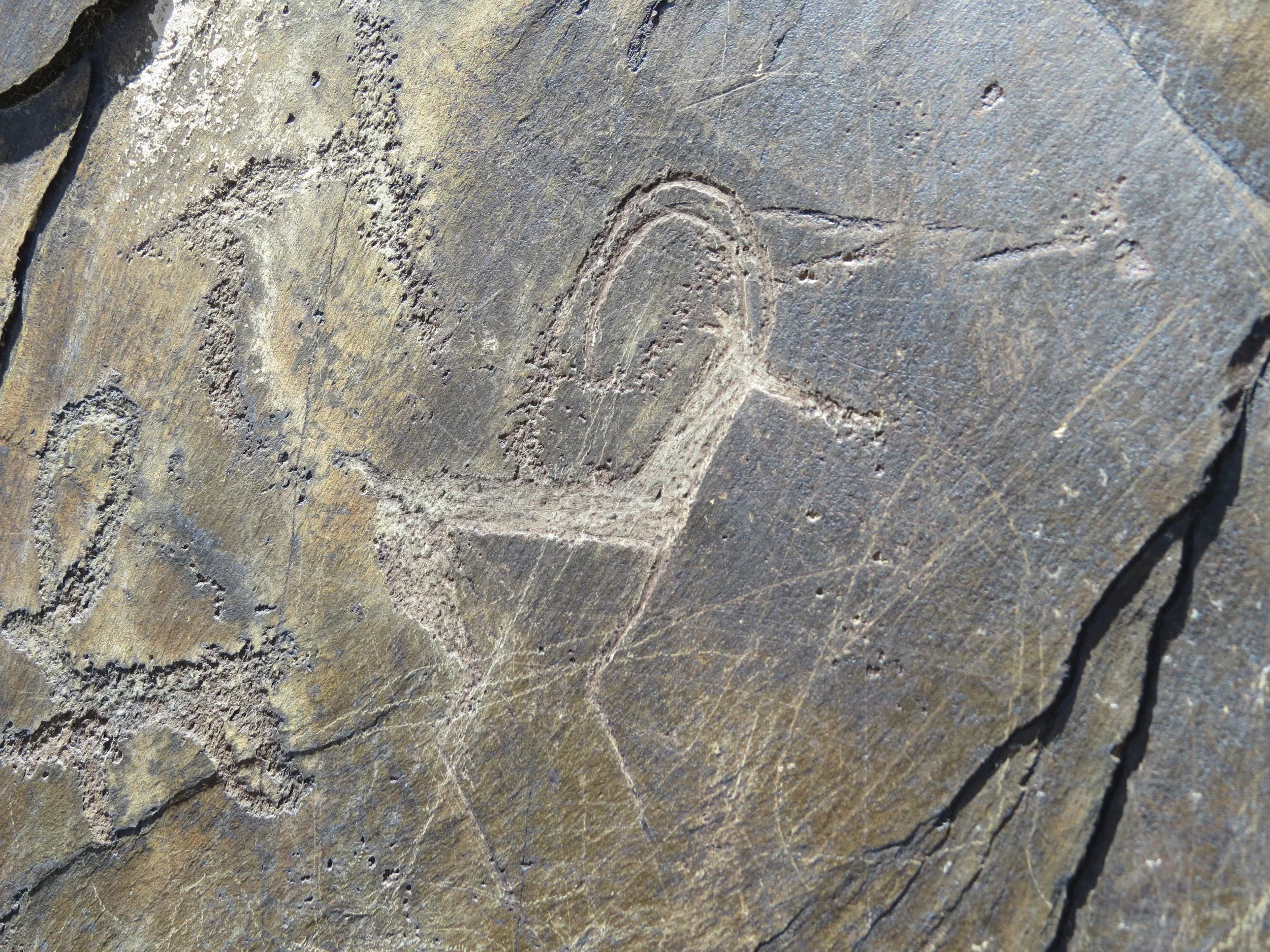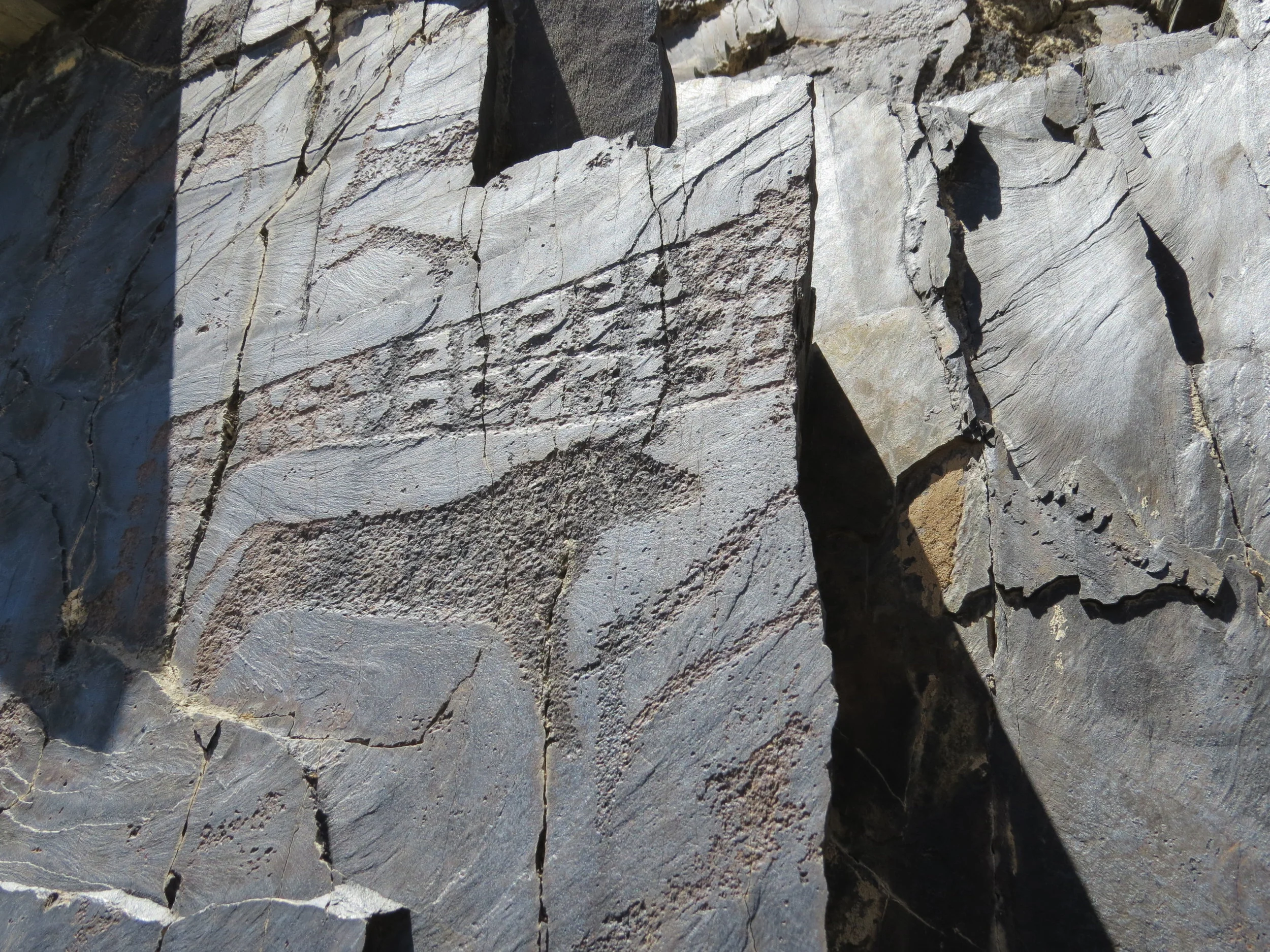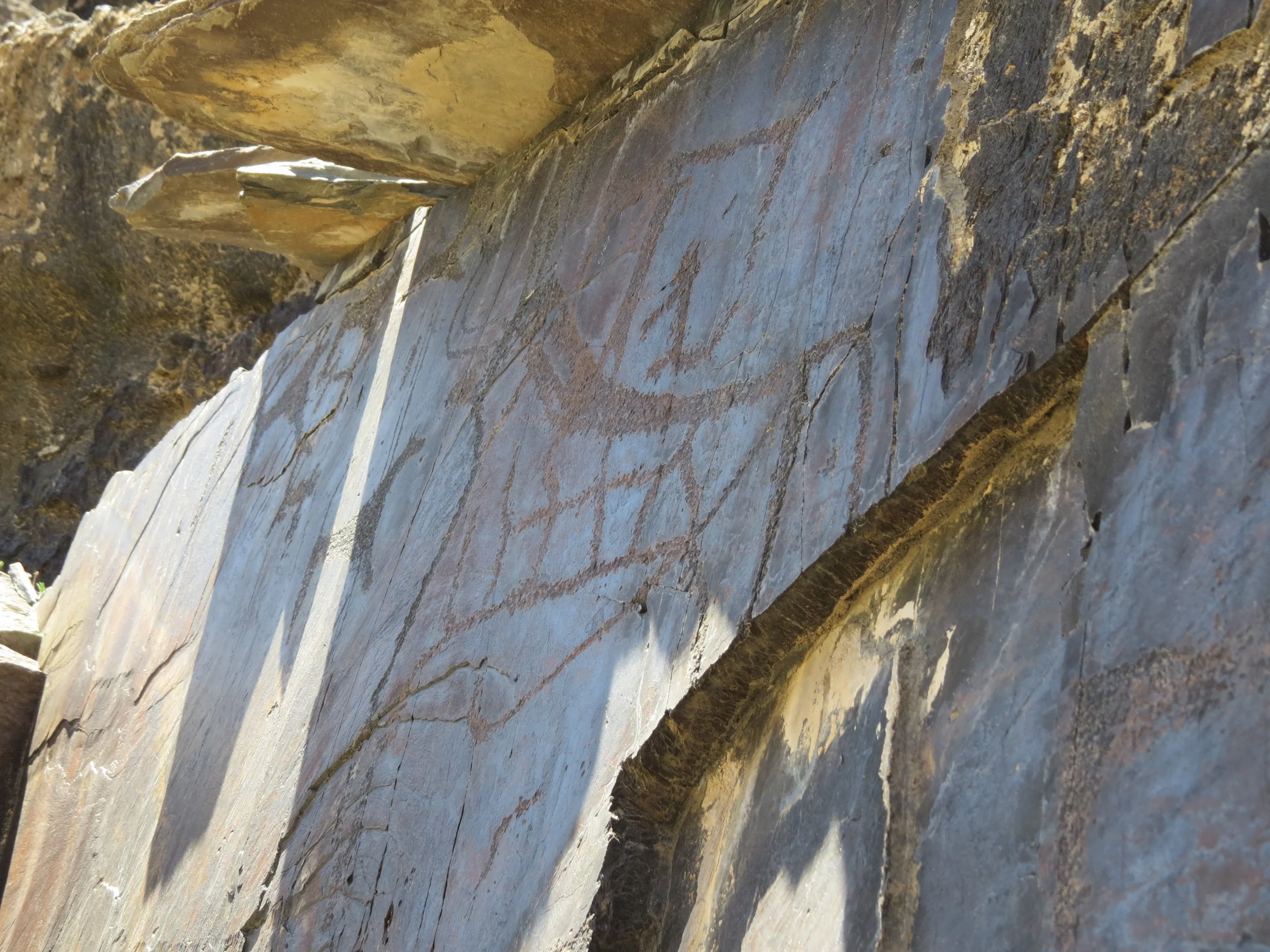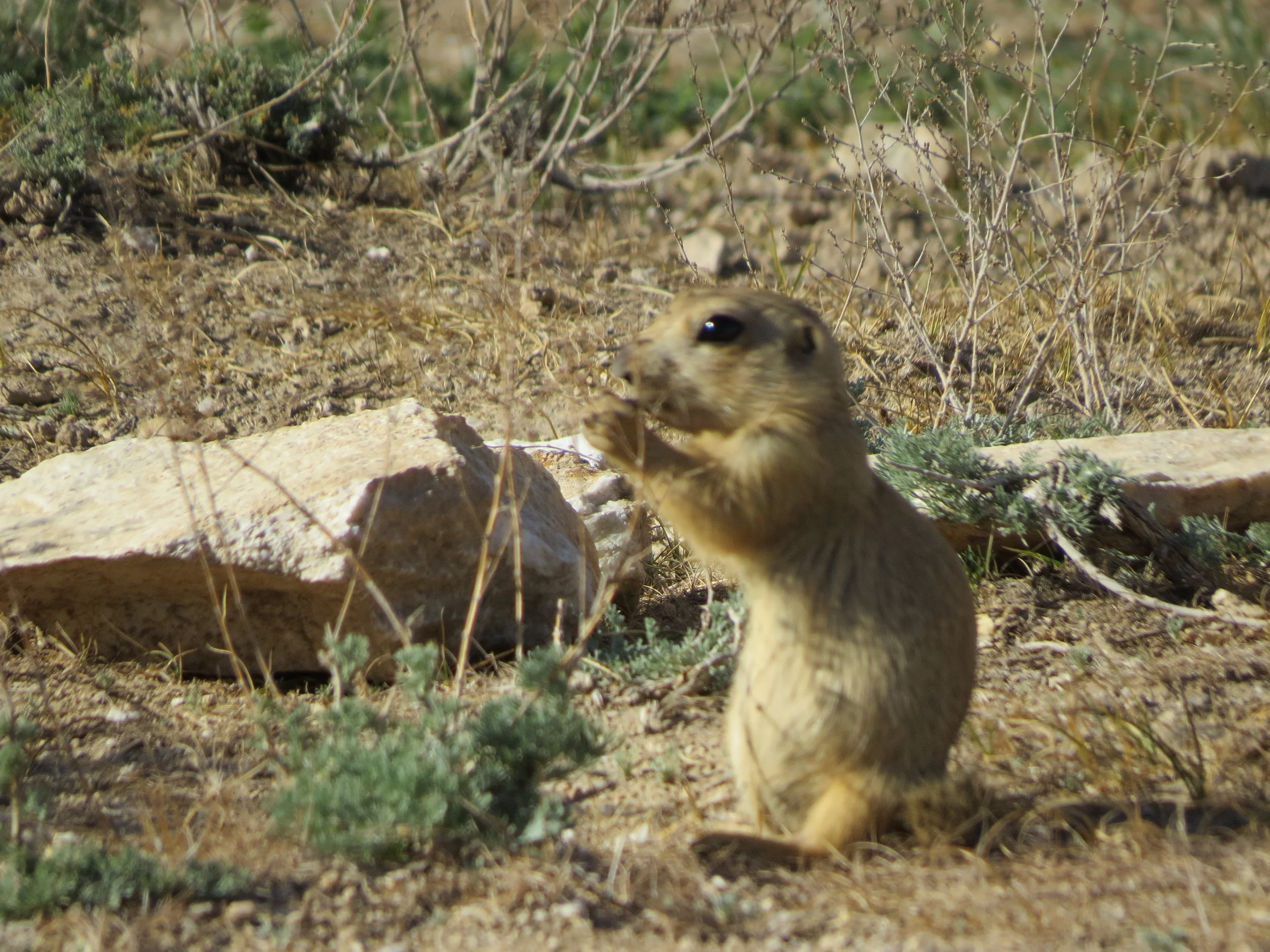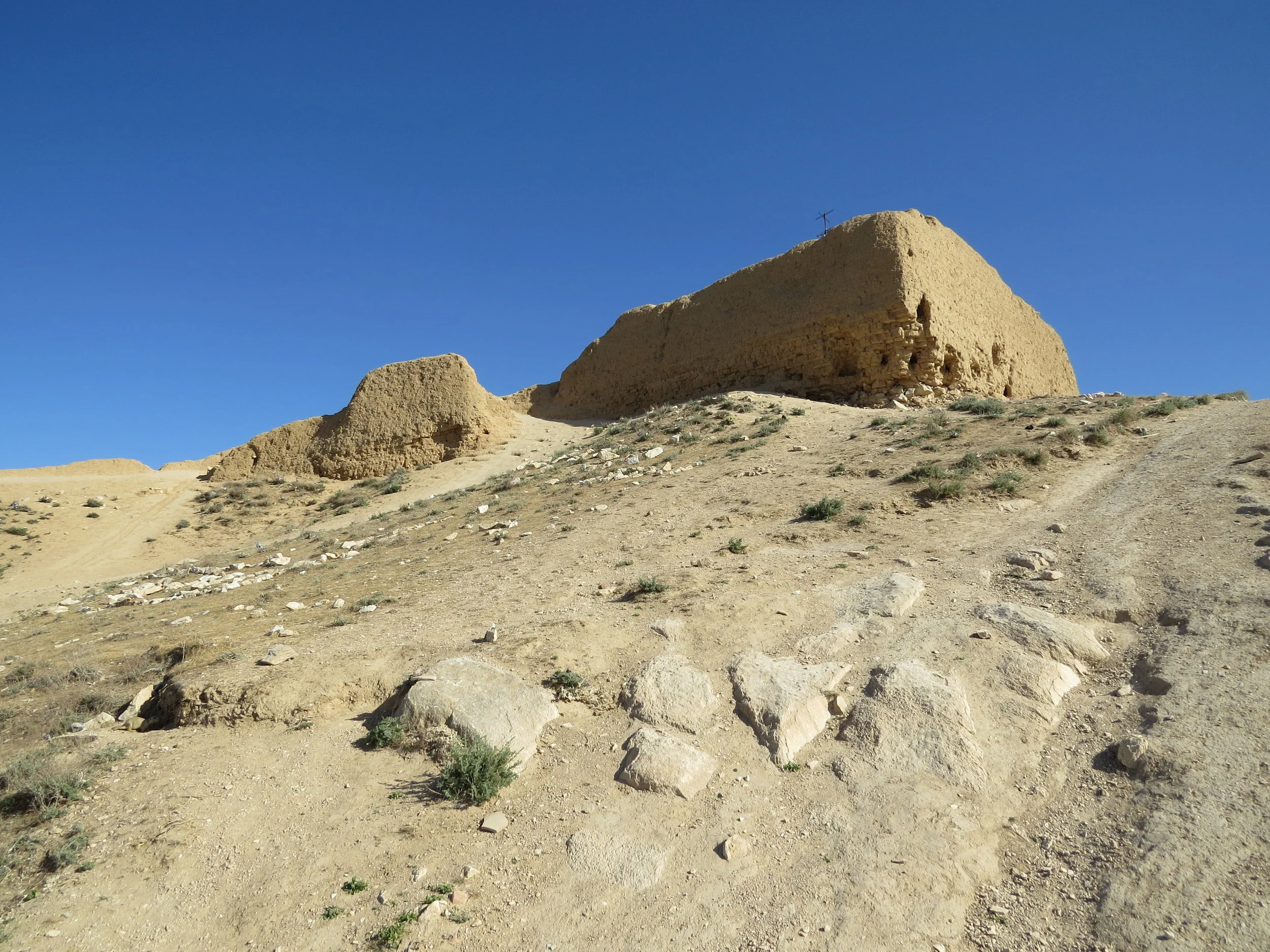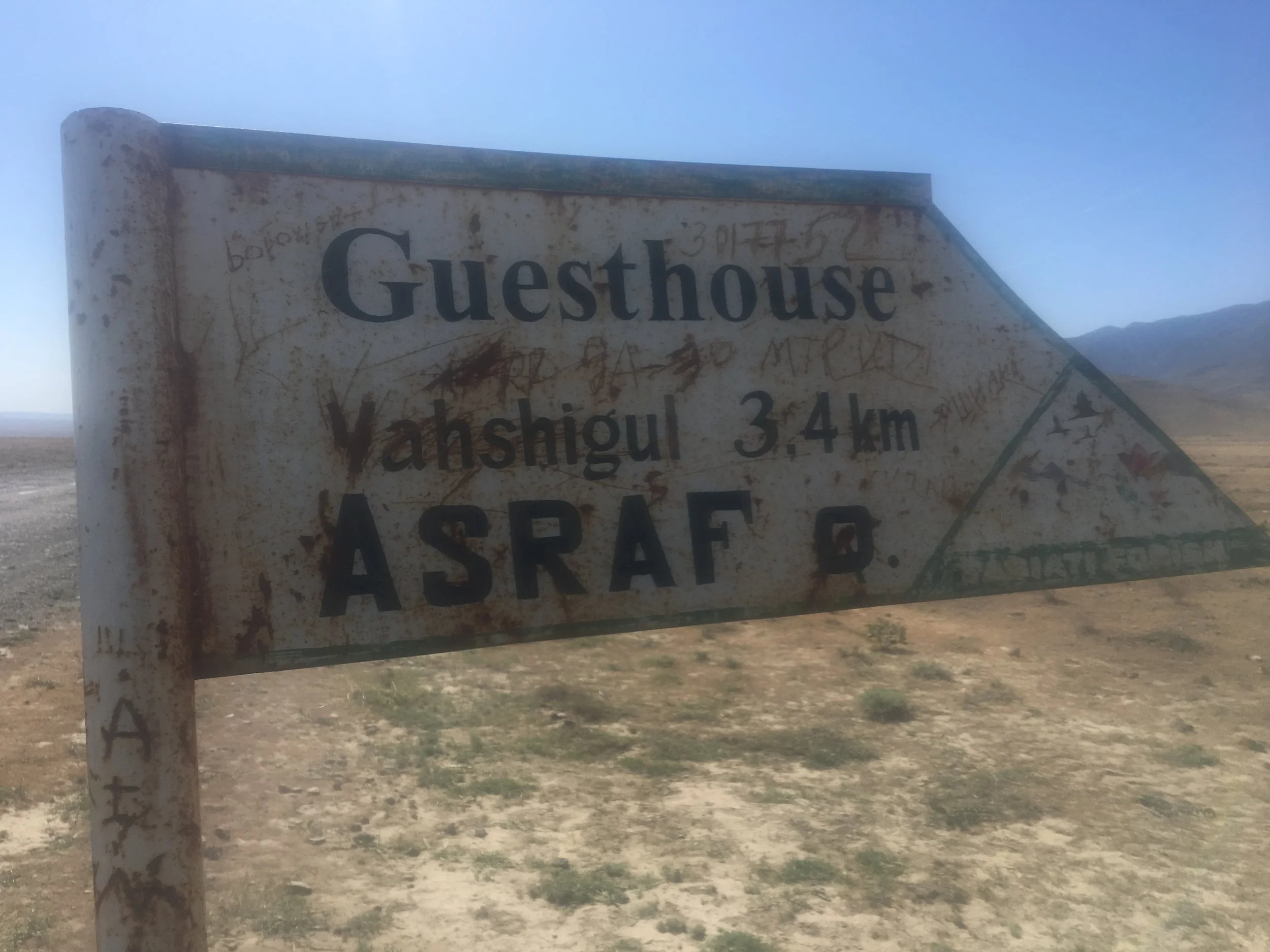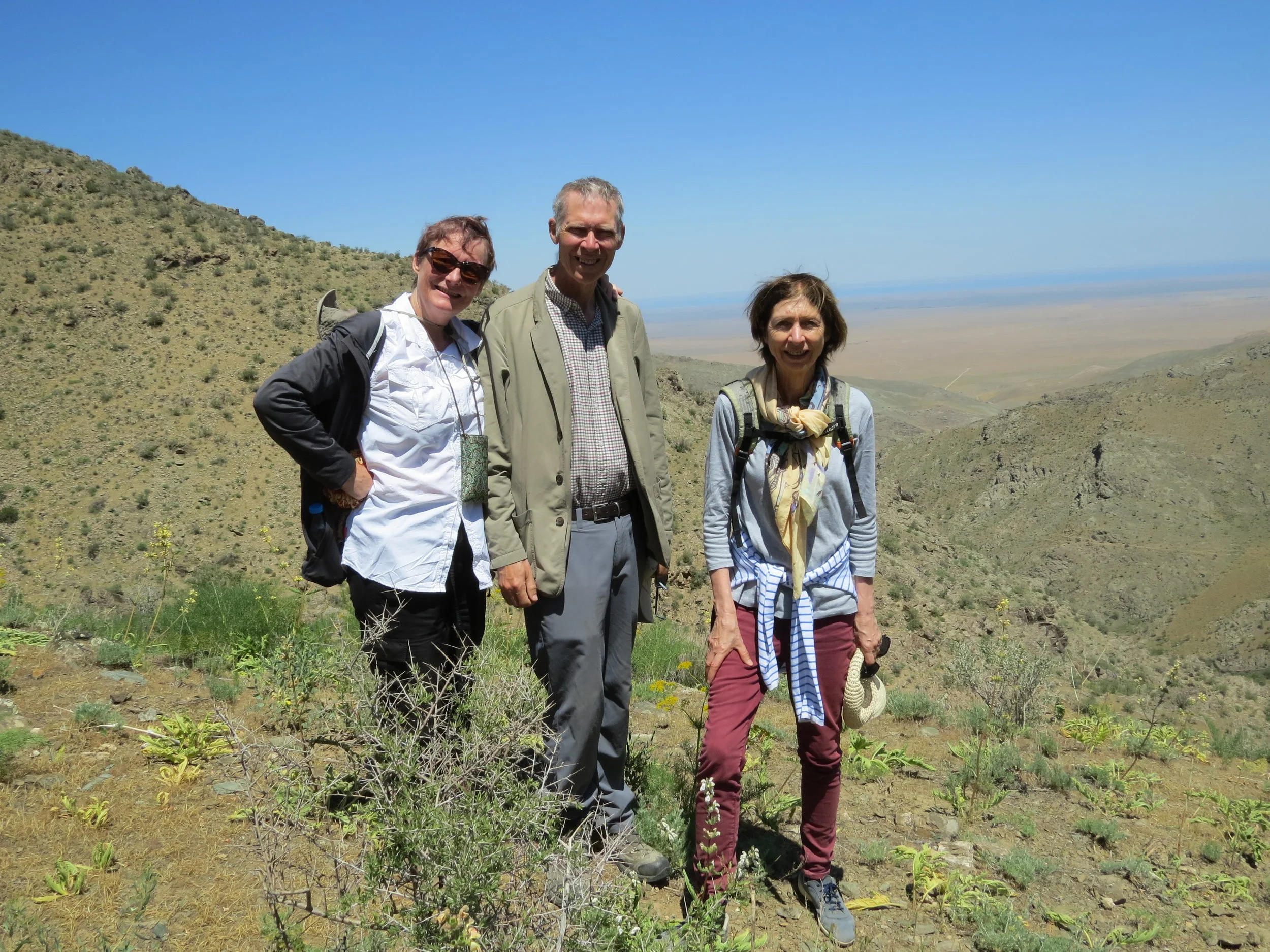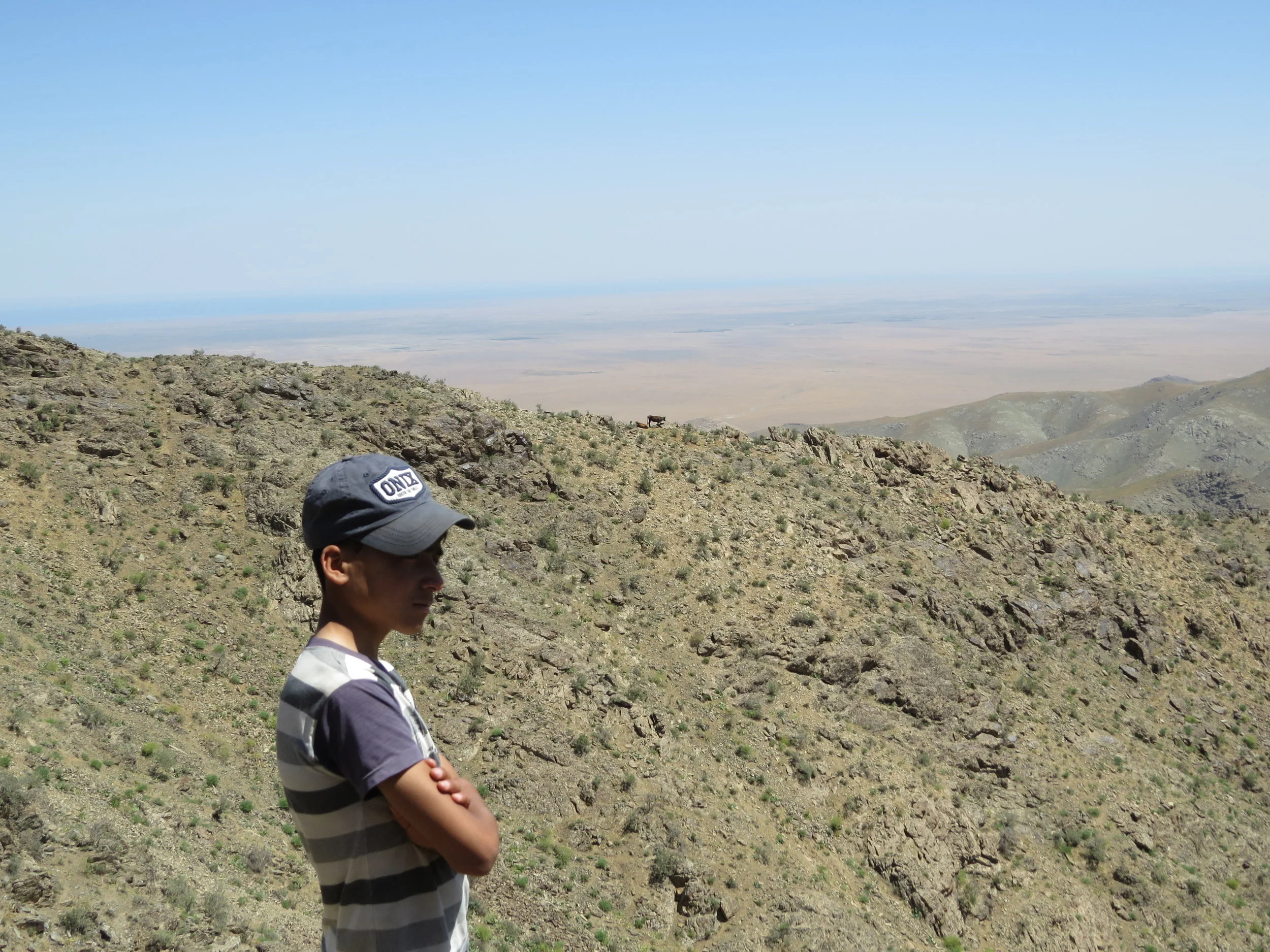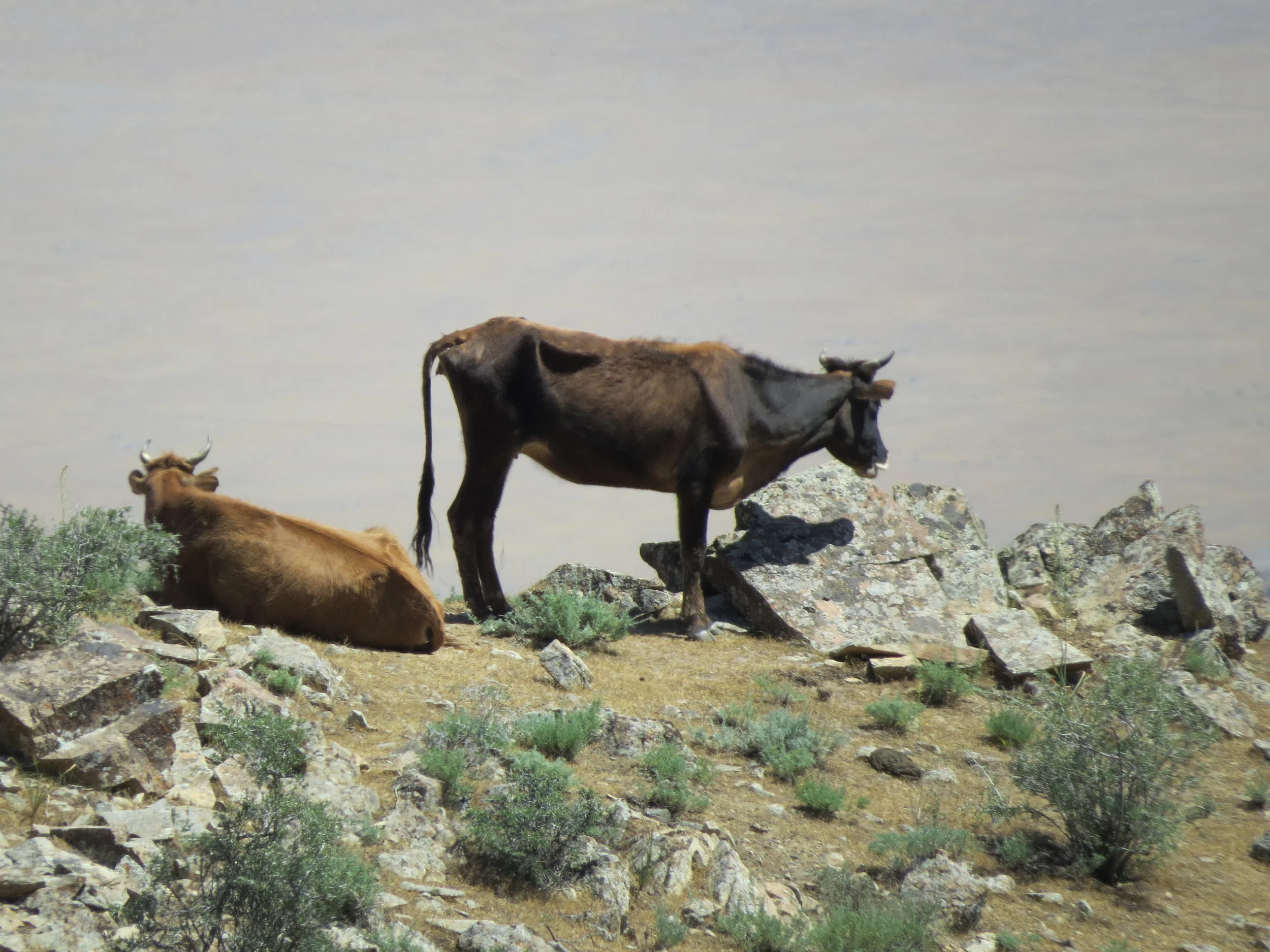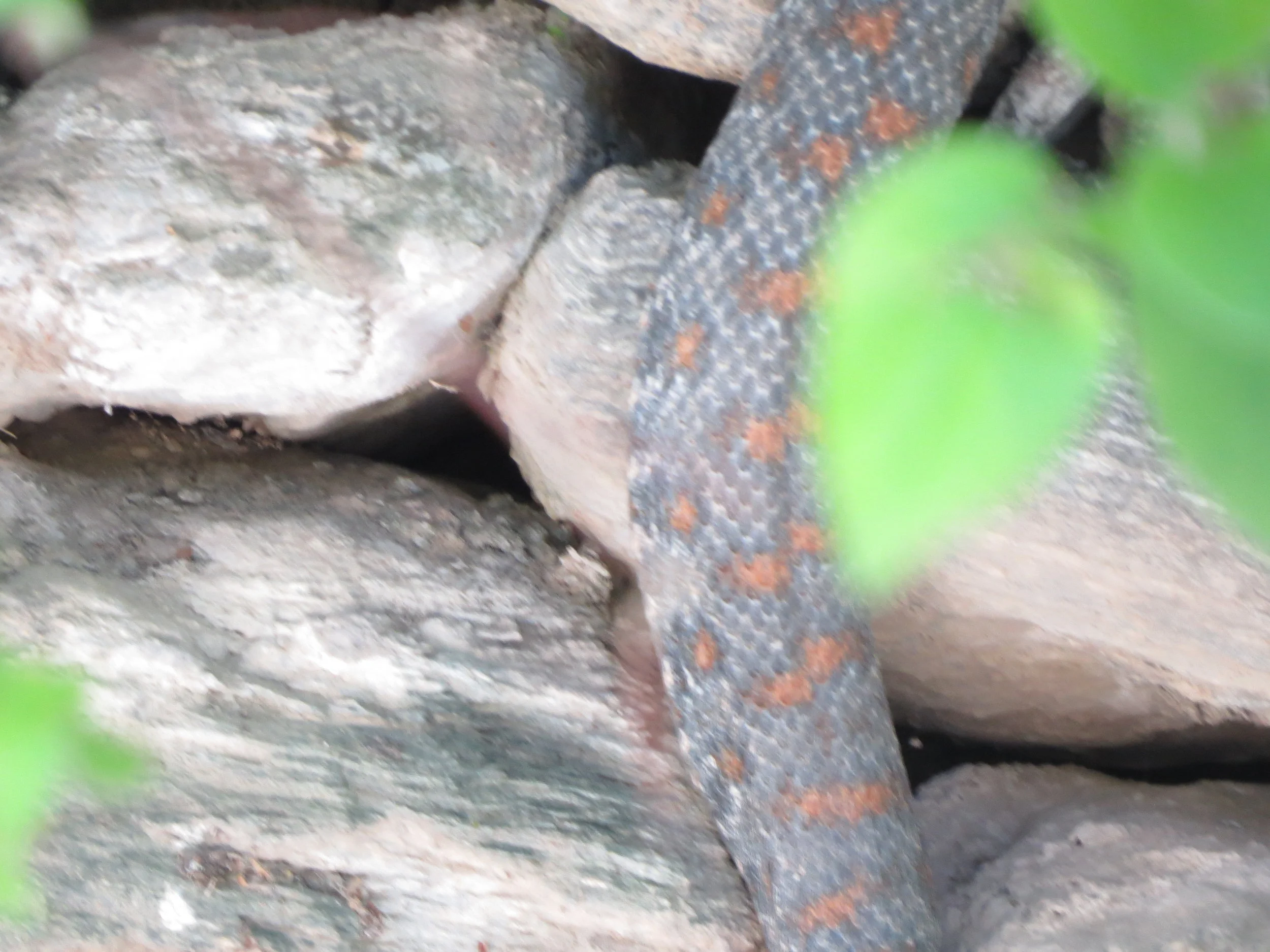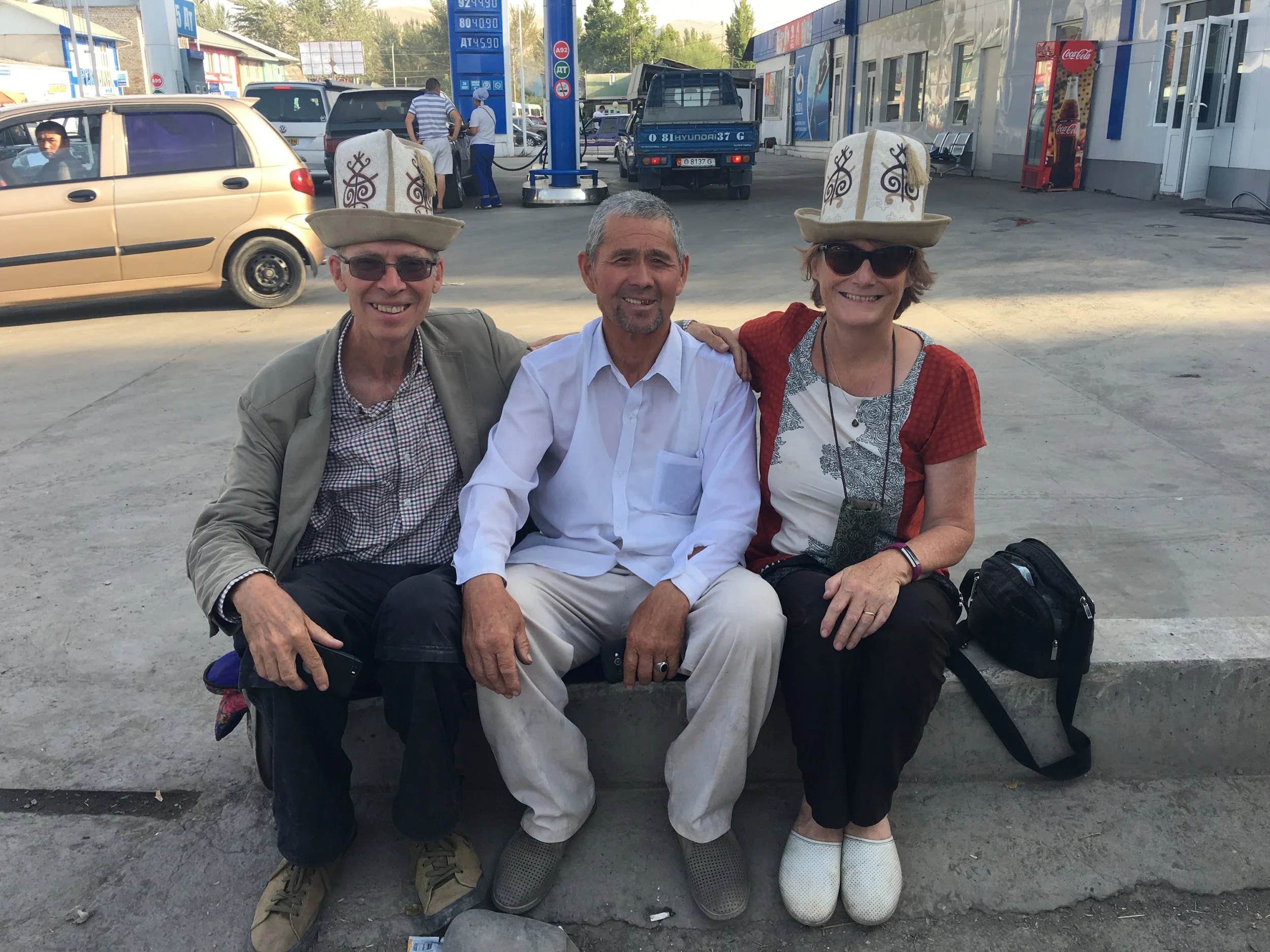Uz4 - To the Mountains of Nuratau
On Friday 4th May we left Bukhara and the fab hotel in the centre of town, and headed off to the mountains where we were due to stay in a homestay in a mountain village.
We acquired a new guide and driver as the we had slotted in some Stone Age cave paintings and the route to the village was apparently difficult to find. So Landy, Jim and I followed Nora, guide and driver in convoy. It made us feel slightly less intrepid as there was no chance of us getting lost!
Our first stop was an ancient water store which had been built in the 14th Century adjacent to an 11th Century caravanserai, along the Silk Road.
It still had fresh water inside and felt nice and cool out of the sun and still no insects! Apparently the natural ventilation helps to discourage them.
Then we popped over the road to the Caravanserai.
Our next stop, was a bit off road as we headed off to find the Sarmyche canyon containing more than 3,000, 5500 year old rock carvings.
We were glad to have Landy on our side and wondered how the driver’s car was coping as, for fun, he jiggled off onto the roughest tracks he could find.
We were then led by foot across a ford and along an unexpected footpath in a fairly small canyon to a narrow track, above which we could see these amazing rock carvings.
No trip to Uzbekistan along the Silk Road is complete with a visit to one of Alexander the Great’s forts.
His main claim to fame is that by the age of 32 he had created one of the biggest empires in the World stretching from Greece (Macedonia) to the Indus River.
He died of sickness around 323BC at the age of 32 and in that short time he was responsible for spreading Greek civilisation across much of the world and is remembered to this day.
The Noor (meaning light) Fort, in the little town of Nurata. was basically a very old and dusty mound with evidence of a former fort visible. Needless to say we climbed to the top and Nora regretted her sandles! We had to walk through stalls selling tacky gifts and food to reach the top.
As with most important monuments there was a Mosque at its base, boasting some holy water in a Chasma spring full of special fish, which looked rather trout-like to me. (They were!)
What caught my eye as we walked up the fort mound, were lots of Great Gerbils, burrowing and scurrying around looking for food.
After the Fort, we headed off for Asraf which was a tiny village where one of the families had taken to hosting visitors. In this respect the experience was similar to the Indian homestay we had been to organised by Fresh Eyes.
It is said that these little settlements date back to Alexander the Great, when Sogdiane inhabitants of Samarkand and its environs fled to the Nuratau mountains to escape. It is said that many of the inhabitants there are directly descended from those early settlers.
What we found, was less of a home stay and more of a rustic holiday camp, with as many as 30 guests, plus guides and drivers, occupying small mud lined rooms on single beds with up to 4 or 5 beds crammed in to newly built accommodation blocks each with a couple of shared toilets and showers.
We managed to bag two rooms for our group of three and I fear that our driver slept outside on a raised platform with shared mattresses under the stars and possibly the guide too!
The setting was, however, tranquil with many trees and birds and for the time being, running water in an otherwise dry mountainous region.
The host family consisted of 4 generations, a great grandfather, his son and wife who were in charge and their sons and a wife who basically ran the place, plus a couple of women to help with cooking and preparing the rooms. There were lots of young boys and some of the younger women were pregnant, so new generations are coming on stream.
The family, with minimal foreign languages, were very friendly and hospitable and did their best to greet the large numbers of visitors that they were looking after, with quite a fast turnaround.
The homestay itself occupied a remote spot in a verdant protected valley blessed with running water from a natural spring. For activity, we were led up the slopes by a very young guide, on a long wild mountain walk, ostensibly to look out for wild sheep and boar, eagles and condors. (If you look closely at this photo you might spy a cow in the centre of the distant ridge!)
Needless to say that we actually saw domestic sheep, some goats and a few cows!
What we did get were stunning 280 degree views from the hill tops over the neighbouring desert.
We did stumble on a birds nest and later a snake which we were told was poisonous.
Nothing good happened to the snake as it slithered over a stone wall alongside the path leading back to the village.
As we walked back through the protected valley path, the track had an abundance of flora and fauna.
The local buildings were constructed in stone and the patterns were great.
The final surprise out here was another rock carving silhouetted against the deep blue skies.
In the evening, basic food was served in a dining space and there were opportunities to chop carrots for those who wanted to help cook the ‘Plov’. One of the perks was the small glasses of vodka that appeared with the evening meal.
This model was different from Thrikapetta in India, that we visited with Kabani and Fresh Eyes, as they ensured that the tourism was sustainable and had minimal negative impact and that the financial benefits were shared across the village.
It was not clear that this one was either of those things as tourists drank water from plastic bottles and showers were using up the fresh spring water that was in short supply when the winters had not provided much rain. We were not sure how well received the project would have been with their neighbours as they led groups of us through beautiful forbidden paths in the protected valley.
Sadly, as Sonia’s cold which had been developing over the last few days was getting worse, she could not join Jim and Nora on the afternoon walk. This started with a visit to a thousand year old mulberry tree. The son who was in charge of the project accompanied us and told us that a holy man had come and sat under the mulberry tree. When he died he was buried at the top of a mound near the mulberry tree. Their hope was that the government might gift them a shrine and some steps to help boost tourist numbers. We were not so sure.
This was the third ancient/ holy mulberry tree we had visited in Uzbekistan or Iran. It seemed that mulberry trees were not just the home of the silk worm, but also a sacred tree like a banyan tree in India or mistletoe in ancient Britain.




